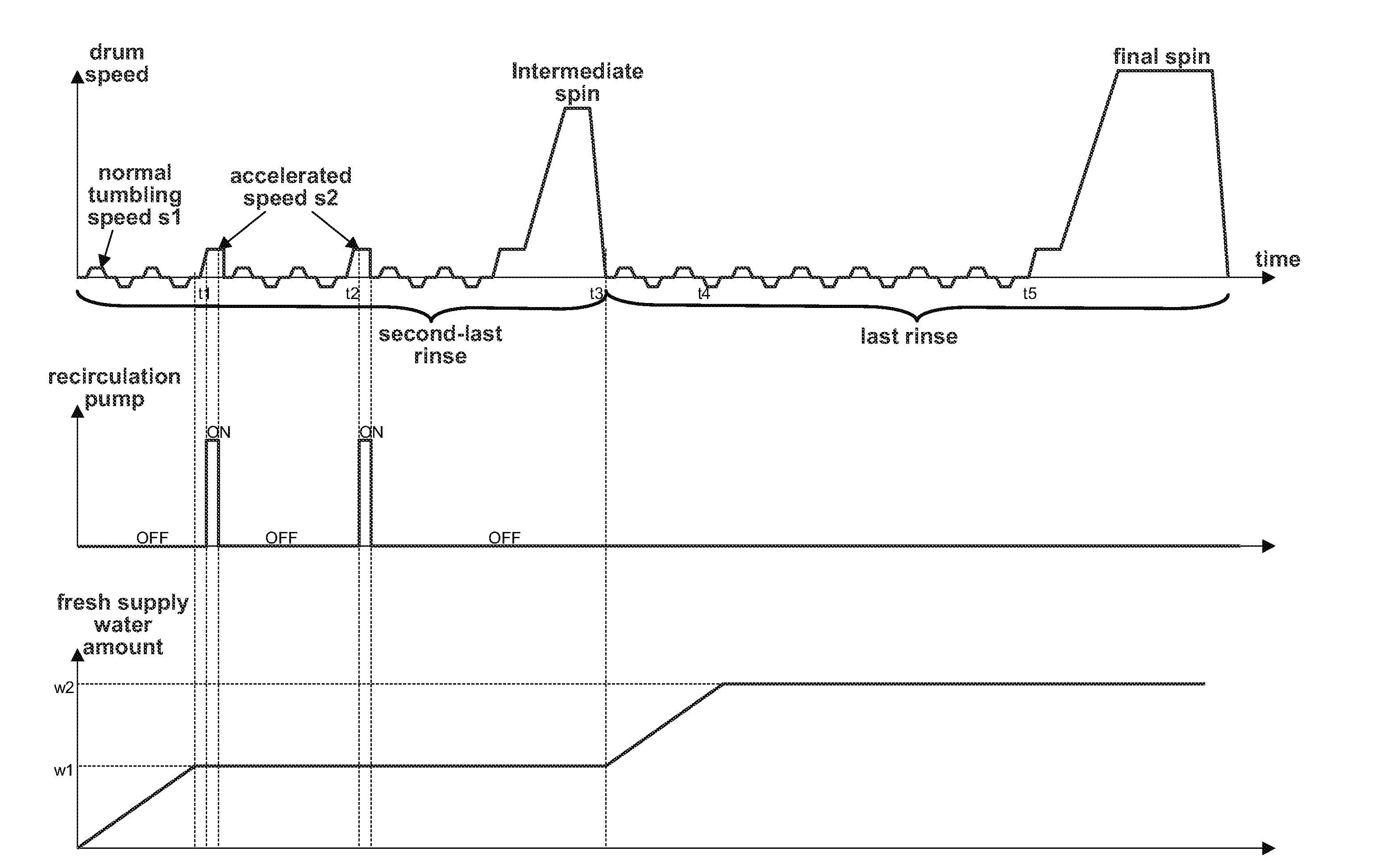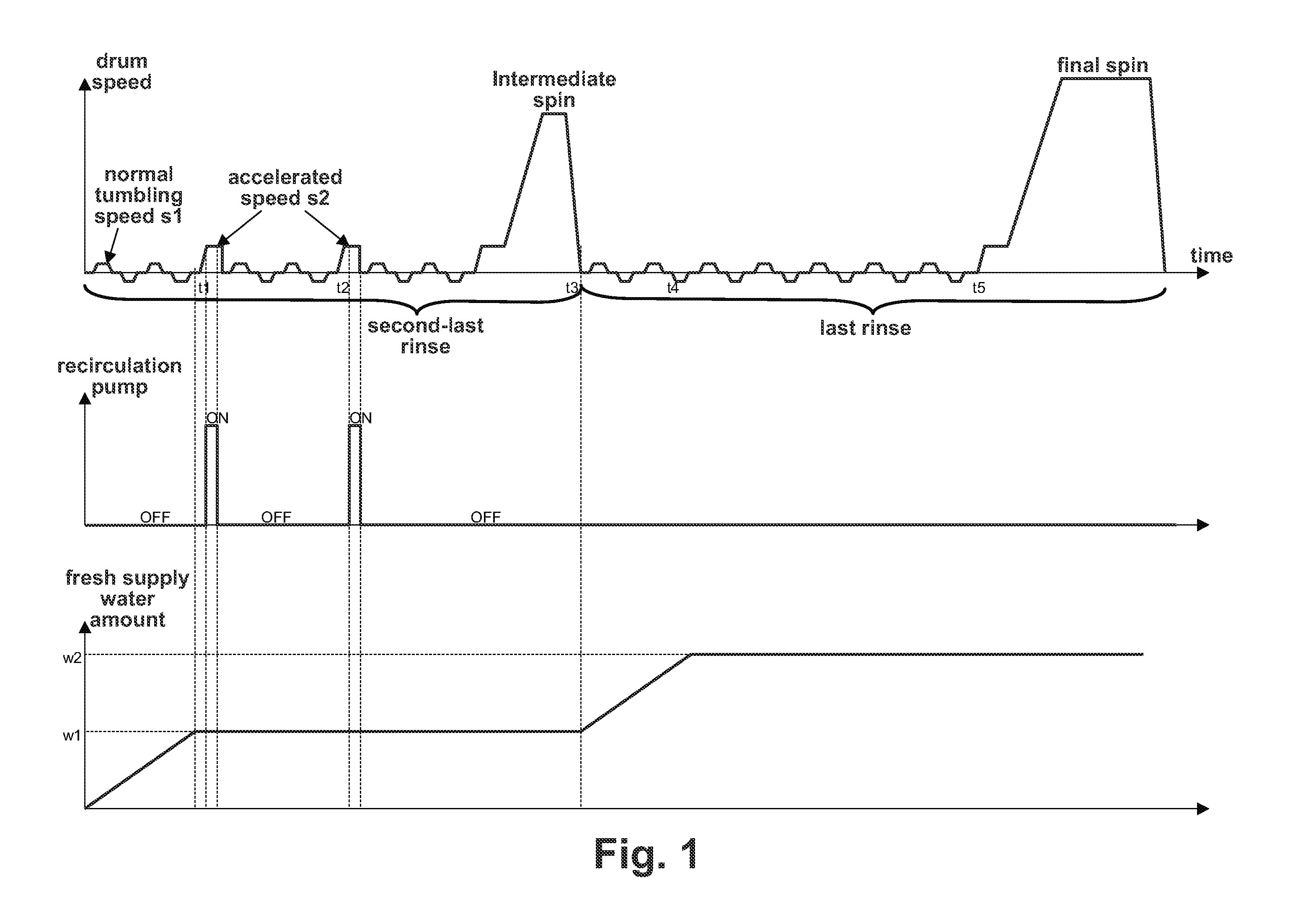Method for rinsing fabric in a washer and washer adapted to carry out this method
- Summary
- Abstract
- Description
- Claims
- Application Information
AI Technical Summary
Problems solved by technology
Method used
Image
Examples
Embodiment Construction
[0012]The applicant has surprisingly discovered that by slightly modifying the known recirculation rinse method it is possible to avoid the above problems, while maintaining a good rinsing efficiency and a reduced consumption of water.
[0013]The preferred method according to the invention comprises a final rinse where water is no longer recirculated and sprayed on the clothes, while clothes are tumbled in an increased amount of rinsing water compared to the previous rinsing step in which recirculation of rinsing water was carried out. If for instance there are three rinse cycles, the recirculation of water will be carried out in the second rinse and optionally also in the first one, but not in the last one where the amount of used rinsing water will be higher than that of the previous cycle. The rinse with recirculation can be done with a small water amount, typically 5 litres for a load of 5 kg of laundry instead of a normal amount of about 10 litres. During rinsing the water is pre...
PUM
 Login to View More
Login to View More Abstract
Description
Claims
Application Information
 Login to View More
Login to View More - R&D
- Intellectual Property
- Life Sciences
- Materials
- Tech Scout
- Unparalleled Data Quality
- Higher Quality Content
- 60% Fewer Hallucinations
Browse by: Latest US Patents, China's latest patents, Technical Efficacy Thesaurus, Application Domain, Technology Topic, Popular Technical Reports.
© 2025 PatSnap. All rights reserved.Legal|Privacy policy|Modern Slavery Act Transparency Statement|Sitemap|About US| Contact US: help@patsnap.com


